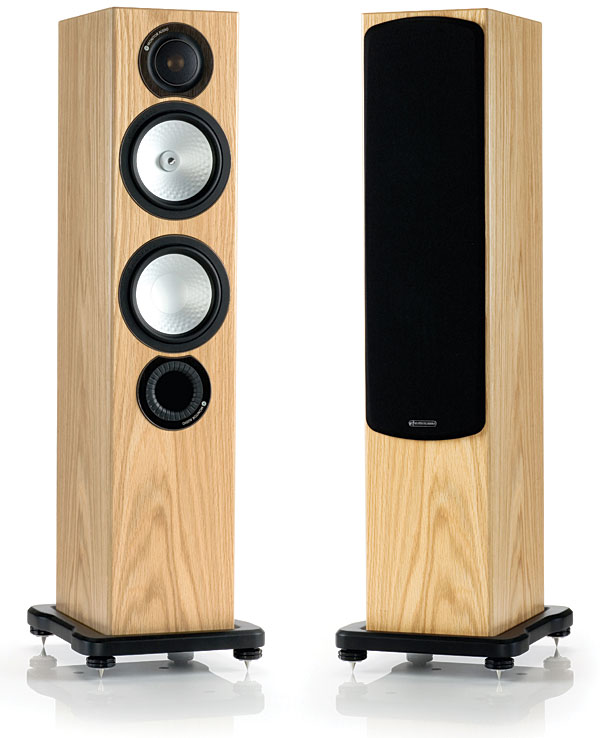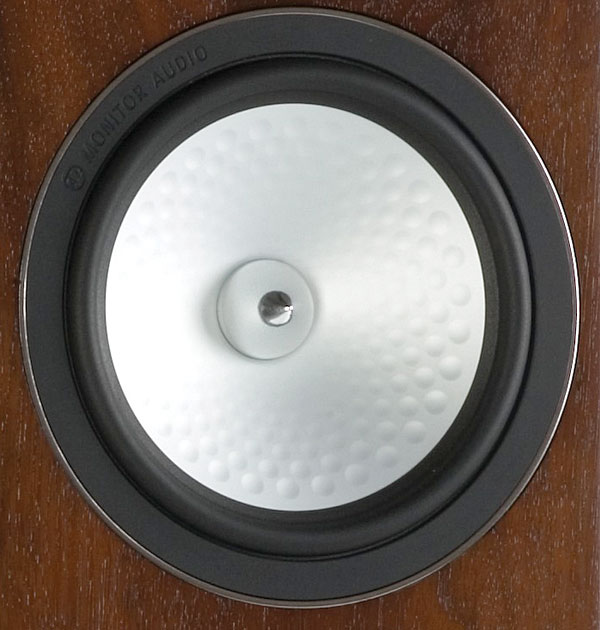| Columns Retired Columns & Blogs |
What Dac, amp, and other equipment would you recommend with these speakers? Thx!
The Silver RX6's reproduction of bass was also superb. Dave Holland's double-bass intro to Kevin Eubanks's "Nemesis," from Holland's Extensions (CD, ECM 1410), was warm and three-dimensional throughout the instrument's entire range. For electronic bass, the rapid-fire bass-synth passage that ends Spaceship, from Philip Glass's Einstein on the Beach (CD, Elektra Nonesuch 7 93230-2), was clean and clear, with no trace of overhang.

The Monitor's high-level dynamic performance was exceptional, especially for a speaker of this size and price, so I subjected it to the Ellen Test: The closing passage of "Mansour's Gift," from my jazz quartet Attention Screen's Live at Merkin Hall (CD, Stereophile STPH018-2), has a triple-forte crash of piano, bass, and drums that probably spans a wider dynamic range than any other of John Atkinson's recordings for the Stereophile label. I put the recording on at a normal listening level for the piece, then wait for the crash. If my wife, Ellen, runs into the room screaming "Turn that down!," I know the speaker has passed the test. The Silver RX6 passed, with flying colors.
The Silver RX6 was also a party speaker that could handle loud rock. For Ellen's birthday dinner, on a lark, she spun Lady Gaga's The Fame Monster (CD, Streamline B0013535-72) at about 98dB. (Yes, same wife.) To my surprise, she stood in my listening room dancing continuously for about six tracks as a half dozen other females, ranging in age from 10 to 65, joined in. I worried about the wine glasses in my liquor cabinet getting knocked off their racks.
The Monitor was also a great home-theater speaker. As partial compensation for not getting a ticket (and I know of no human or semi-human being who did) to the Kraftwerk festival in April at the Museum of Modern Art, where the band was to perform their entire catalog over eight nights, I watched all of their Minimum/Maximum video (DVD, EMI ASW 36292), also at about 98dB. The sense of drama and passion came through clearly, transporting me back to the concert I attended during Kraftwerk's 2006 world tour, during which the video was shot. I was thus able to turn my musically inclined 11-year-old daughter, Caitlin, on to the band, as well as our close family friend Danny Gray, who, at 23, is using his Columbia University physics degree to play in an original alternative-rock band. (Yes!)
Comparisons
I compared the Monitor Audio Silver RX6 ($1250/pair) with the Monitor Silver RS6 I reviewed in March 2006 ($1200/pair when last offered), the Epos M5i ($899/pair), and the Dynaudio Excite X12 ($1200/pair).
I was really looking forward to the RX6/RS6 comparison. I've listened to many affordable speakers since I reviewed the Silver RS6, and while it remained my benchmark for floorstanding speakers in the $1000/pair price range and has clean, extended highs, I've heard several other affordable designs that present a more refined and delicate treble—and I was intrigued by Monitor's statement that in the Silver RX6 they'd eliminated the RS6's slight peak at 11kHz. Sure enough, as I switched back and forth between the RX6 and RS6, I noted that the RX6 had more natural and realistic highs. Sibilants were more prominent through the RS6, and could be a bit brash in highly modulated passages, but not through the RX6. However, in all other areas—bass to midrange timbres, detail, transient articulation, ambience retrieval, soundstaging, dynamics—the RS6 and RX6 were virtually identical.

The Epos M5i had an equally detailed and natural midrange and midbass, although the Epos's bass didn't go as deep as the Silver RX6's, nor were its high-level dynamics as extended. I also felt the RX6's highs were more refined.
The Dynaudio Excite X12 excels at midrange detail and naturalness, and its highs are as delicate and detailed as the Silver RX6's. However, the Excite's midbass is slightly warmer and not as extended as the RX6's, though its high-level dynamics, while not in the Monitor's league, were still very impressive for a bookshelf loudspeaker.
Summing Up
Despite the advances made in affordable speakers in the six years since I reviewed Monitor Audio's Silver RS6, its replacement, the Silver RX6, excelled in every parameter by today's standards, demonstrating a broad range of strengths and no weaknesses. And while you might find affordable speakers that slightly outperform the Silver RX6 in an area or two, I doubt anyone will find one that's so universally appealing. It was an ideal match for every type of music, from delicate female voices and jazz trios to bombastic orchestral and electronic rock music. And its small footprint, attractive but unassuming appearance, and clean, extended bass performance make it an ideal home-theater speaker: one that obviates the need for a subwoofer. I can't think of another affordable speaker that better meets such a broad range of needs.

What Dac, amp, and other equipment would you recommend with these speakers? Thx!